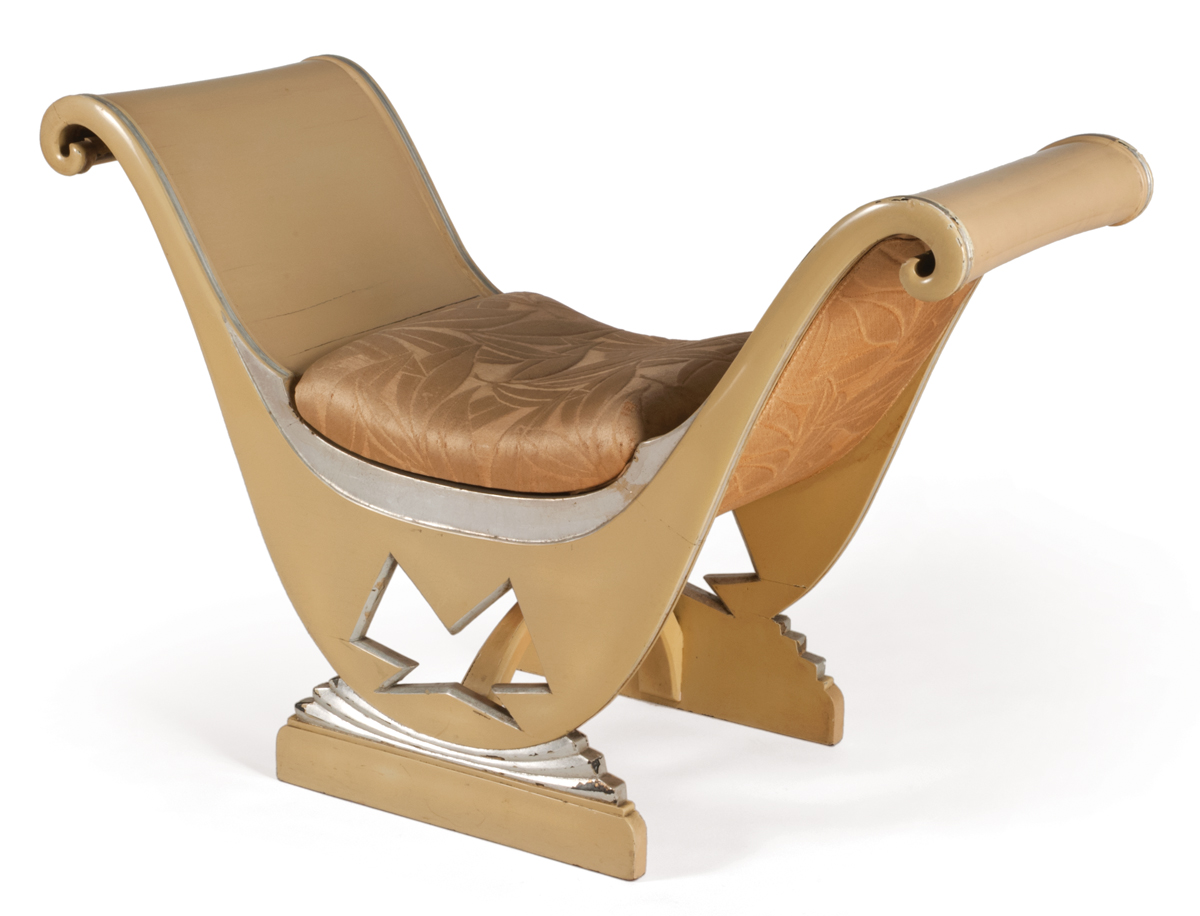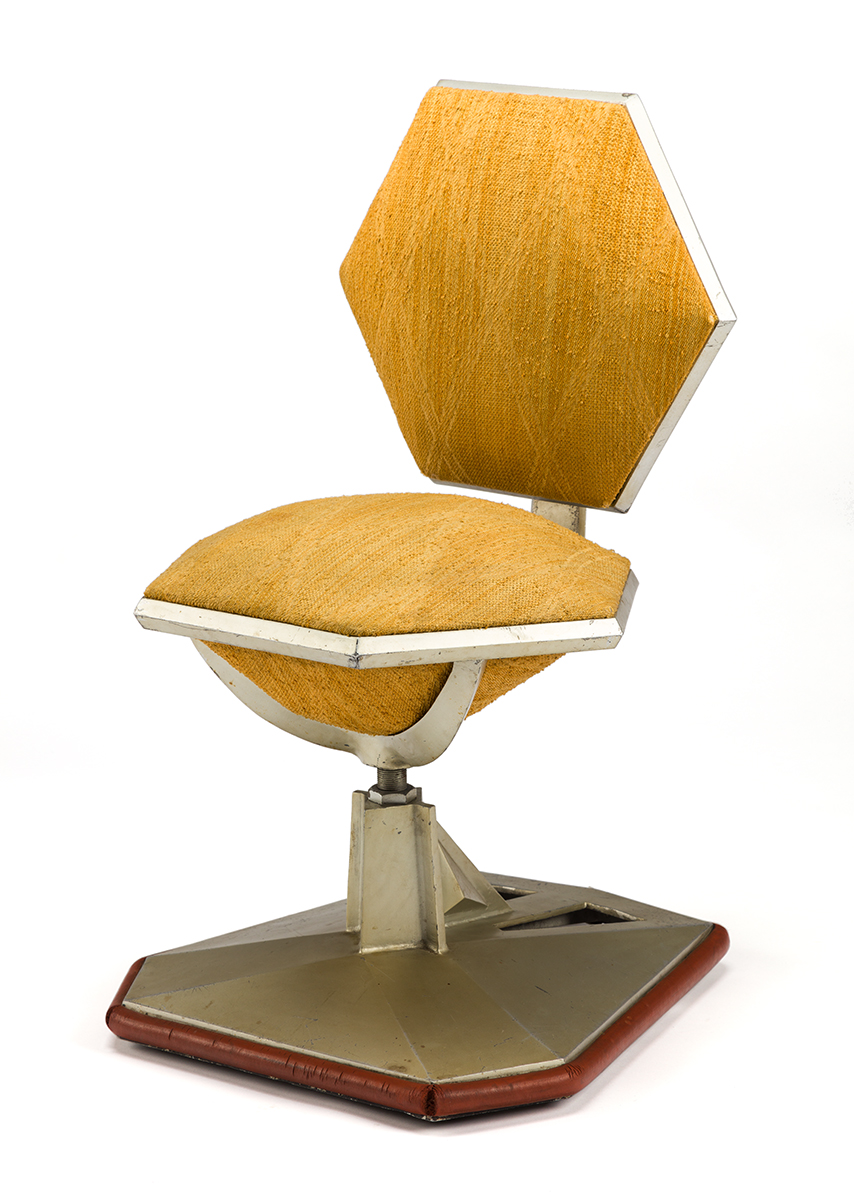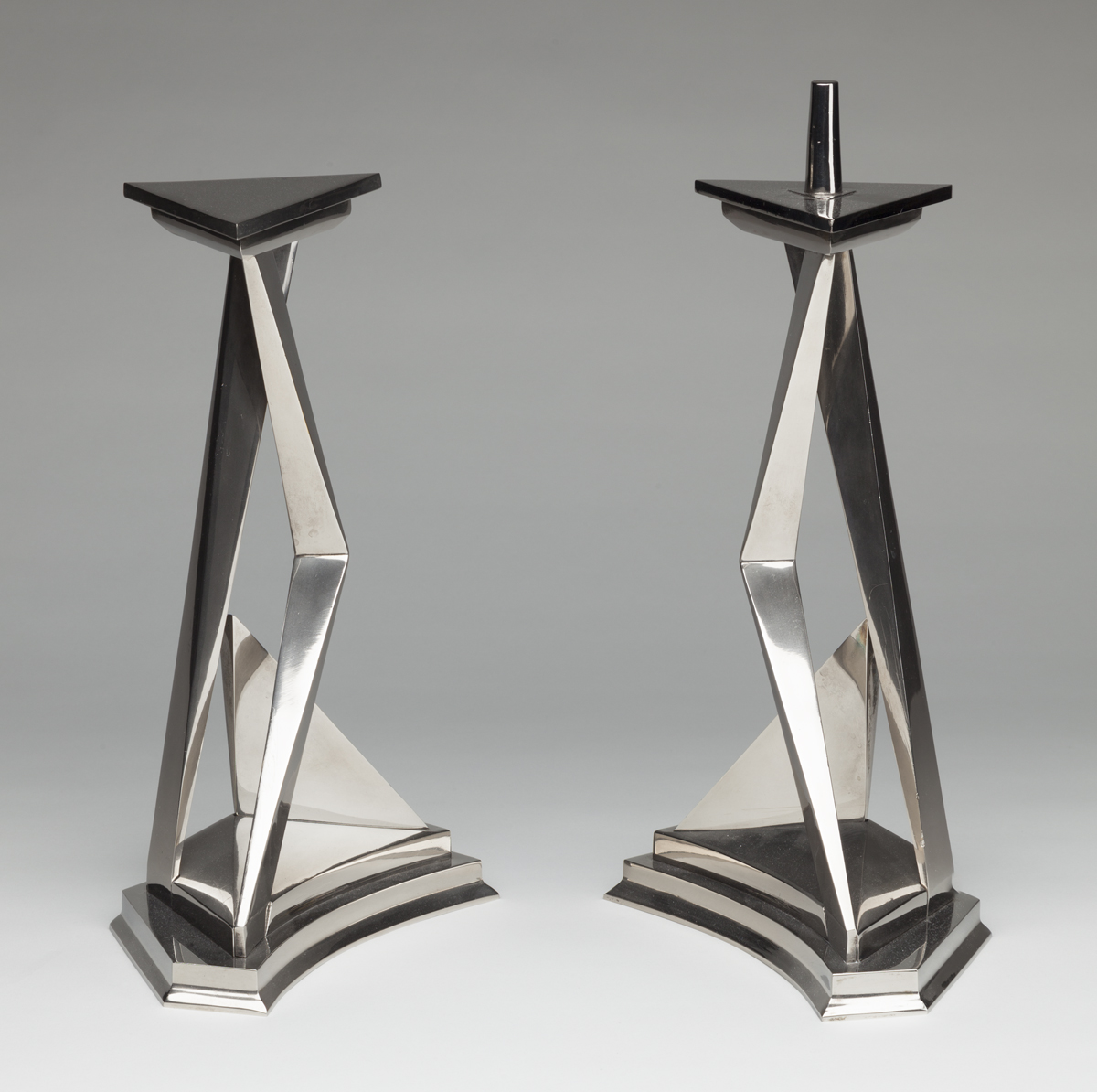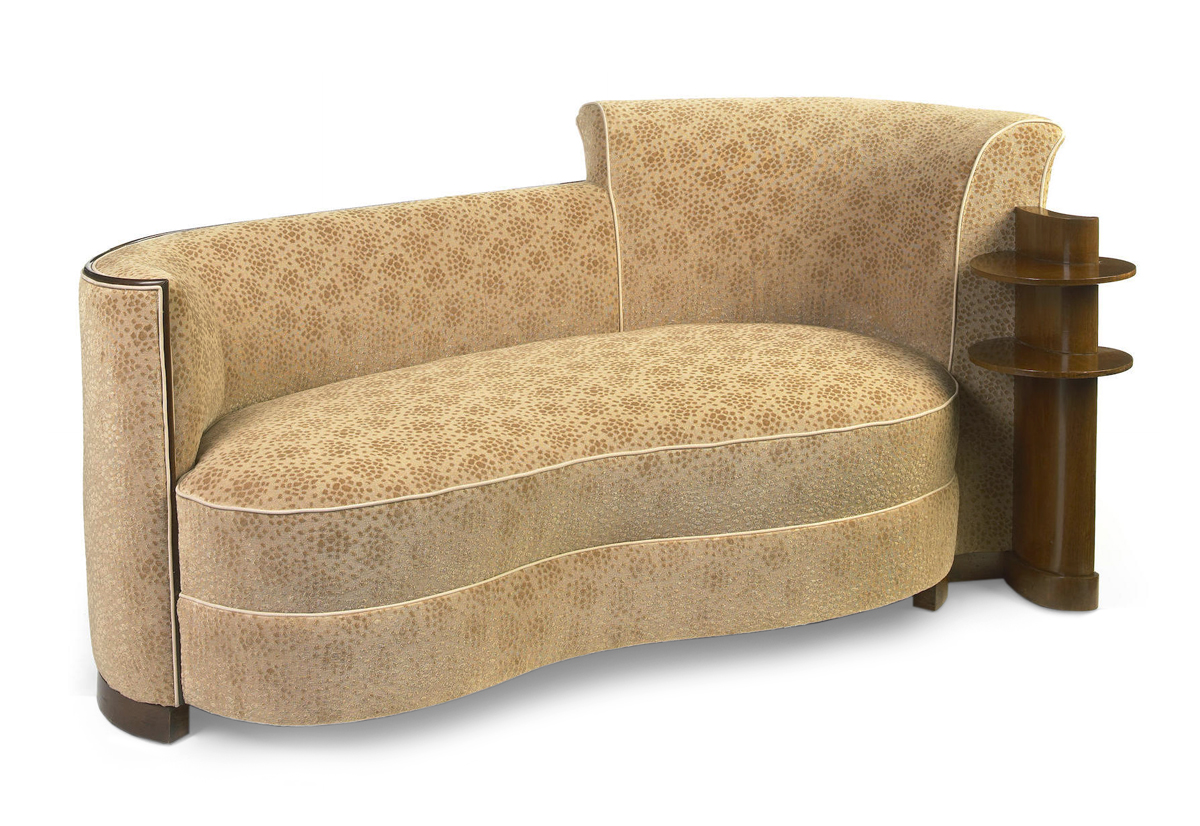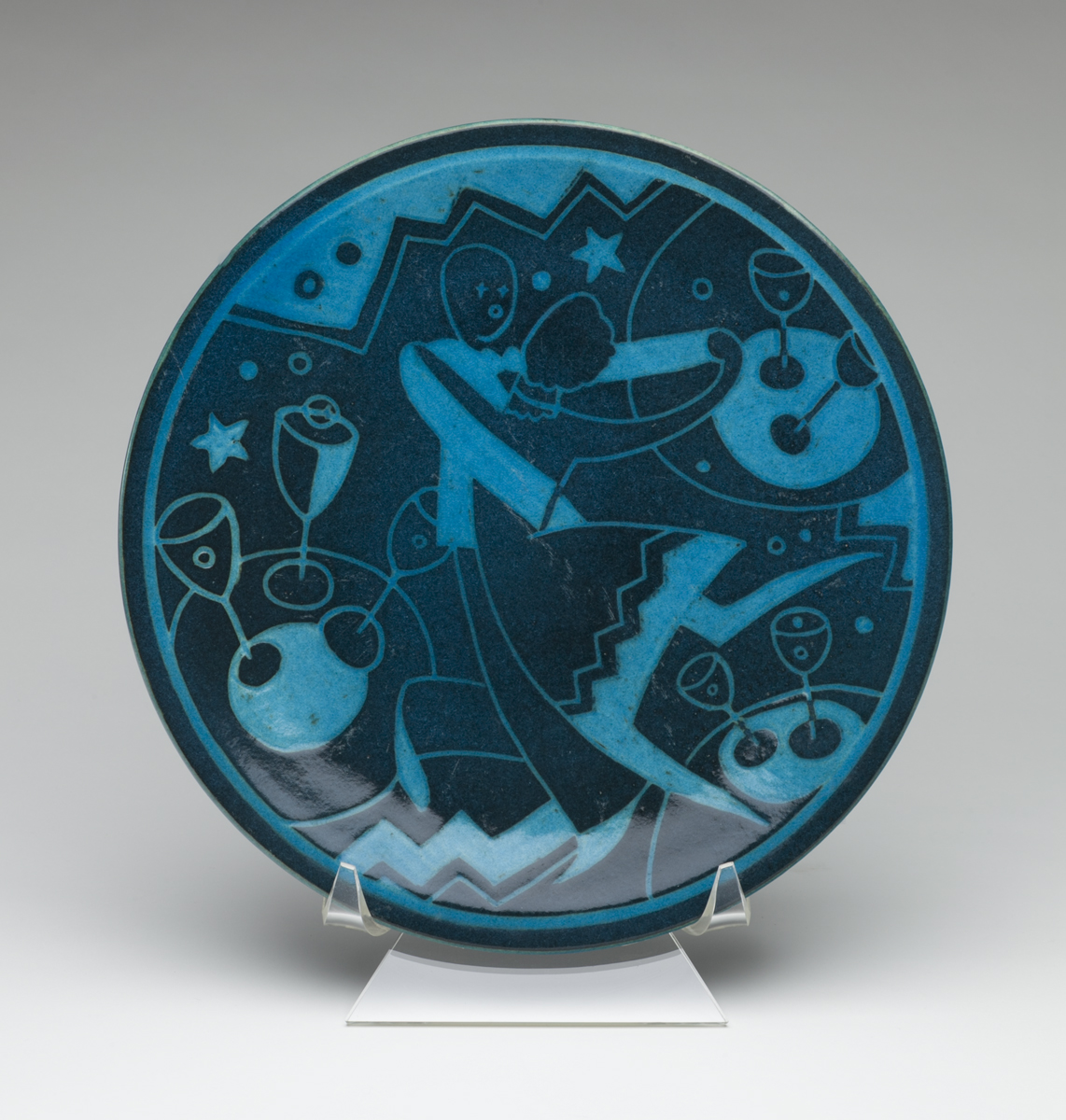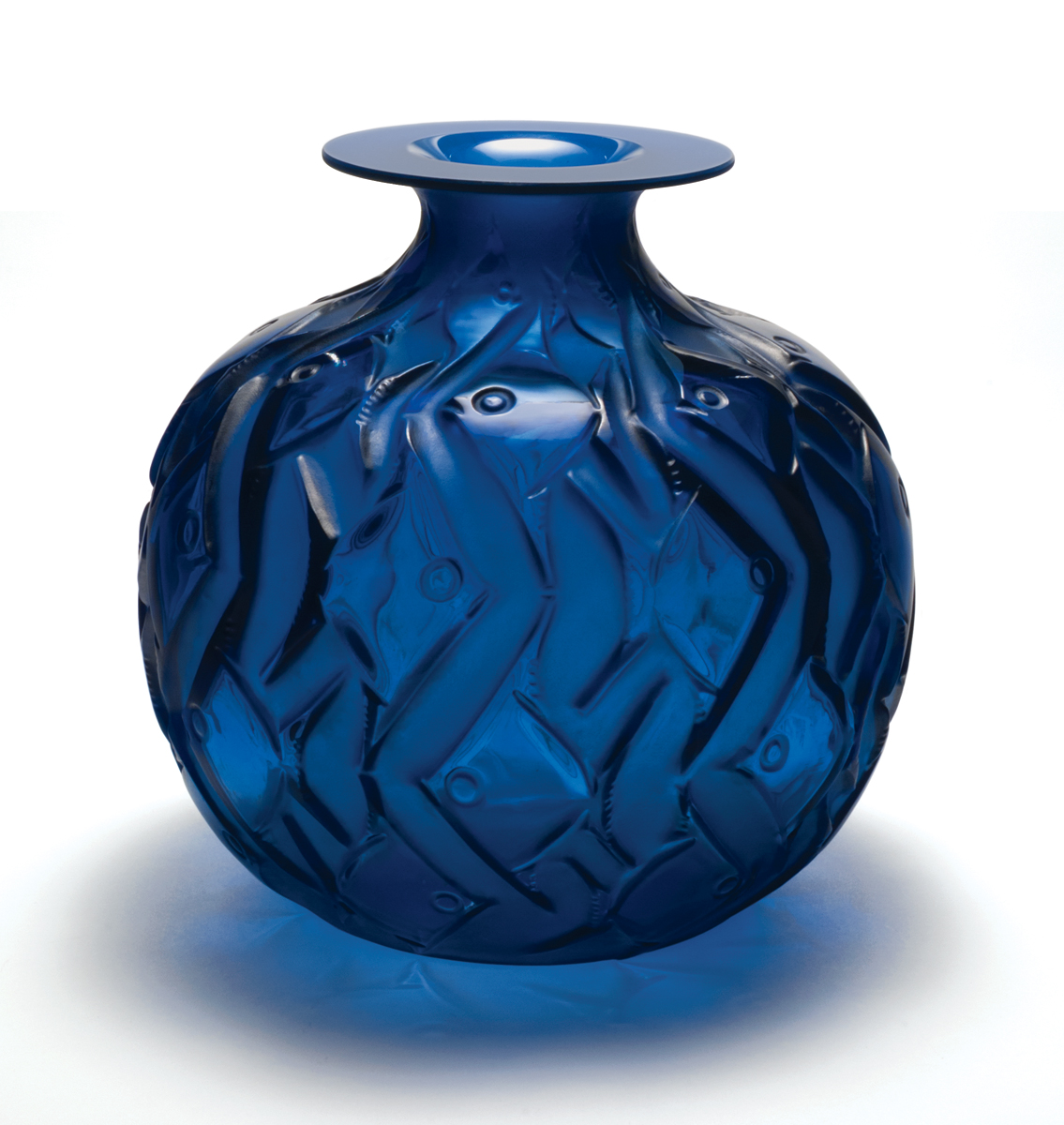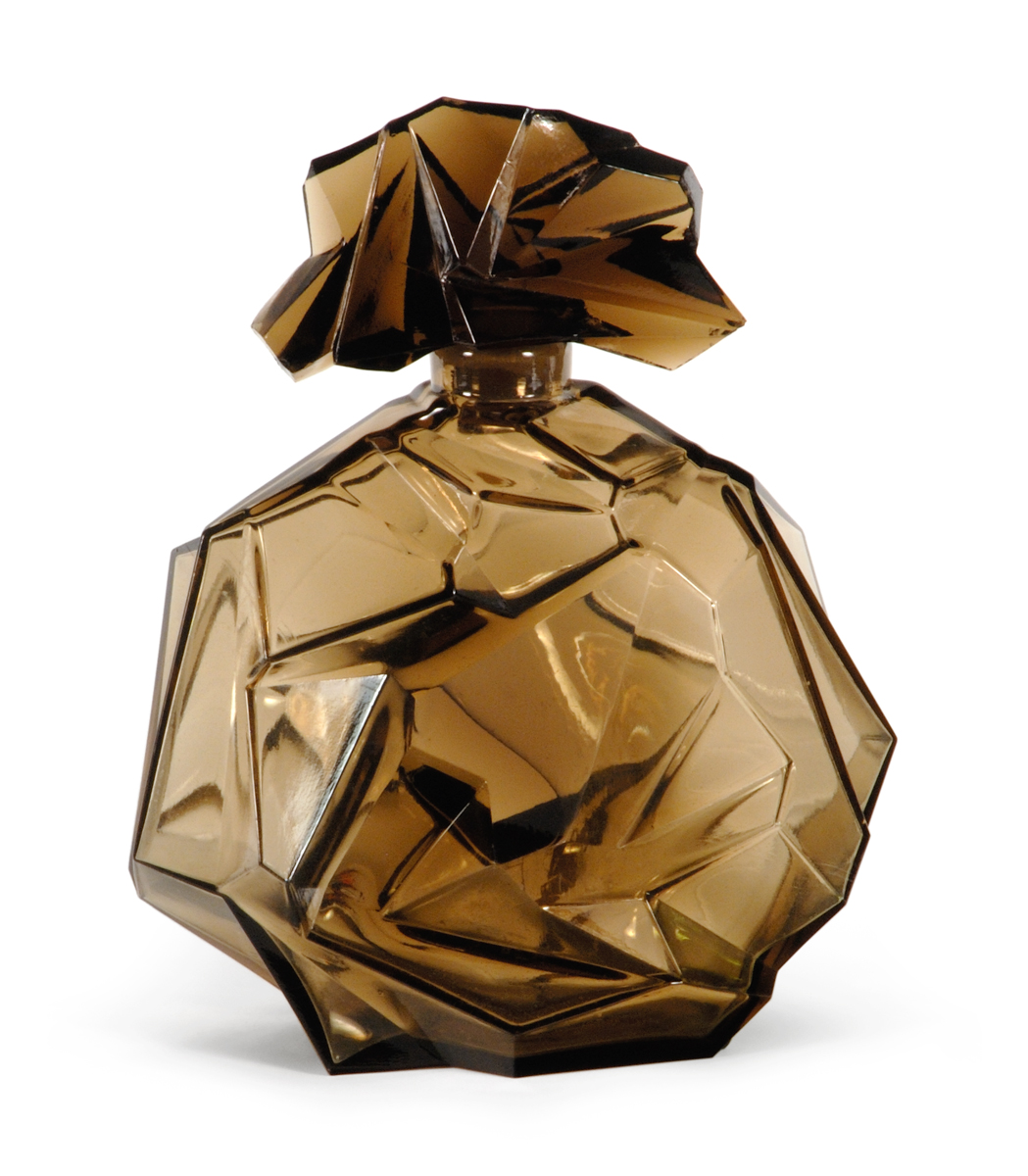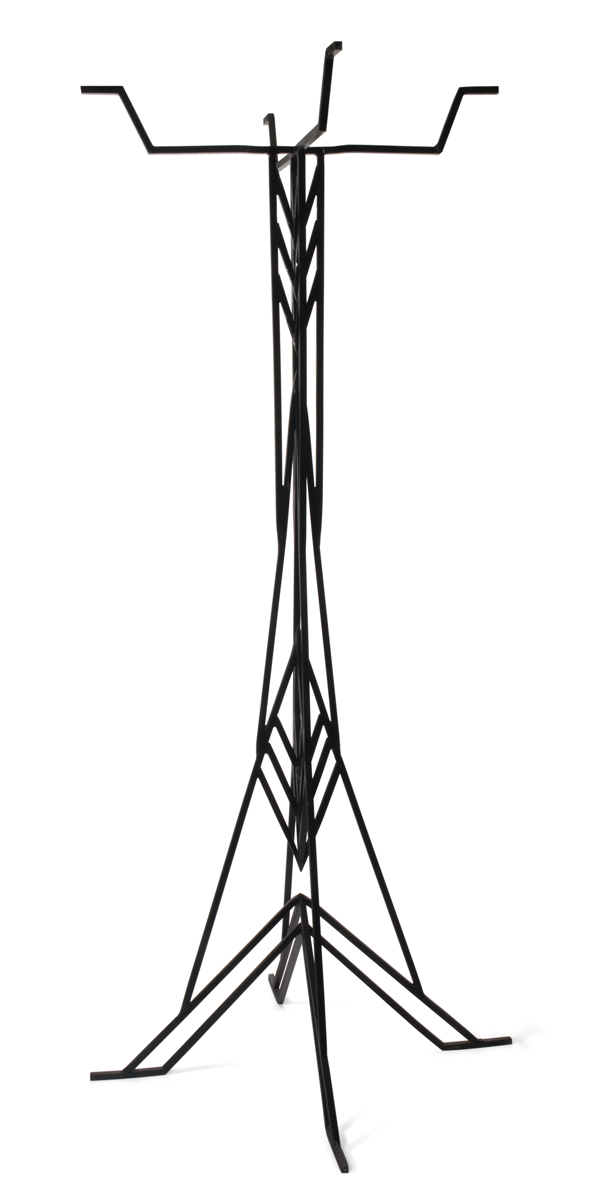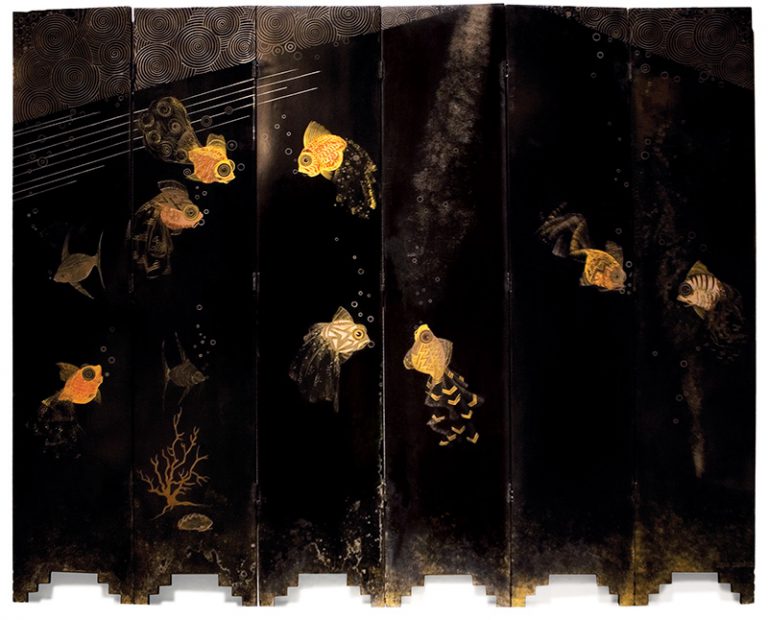
Six Panel Screen
Design Date 1925 or before
Designer Jean Dunand (1877-1942, Swiss)
Media lacquered wood
Dimensions 49 1/8 x 60 1/4 x 3/8 inches
Designers Émile-Jacques Ruhlmann, Jean Dunand and René Lalique can be considered the triumvirate of French Art Deco. Dunand was influenced by the combination of Eastern and Western motifs and design he saw during the Art Deco period. His many lacquered goldfish-patterned screens reflect this influence. The naturalistic depiction of an iconic Japanese fish, as well as the use of lacquer, represent the Eastern influence, while Dunand’s enhancement of the fish with abstract linear patterns in its scales is more European. Dunand learned the Japanese lacquer technique from a master Japanese lacquerer in 1912. Lacquering is a difficult process involving the resins from two trees found in Asia. The naturally-derived lacquer has higher shine than either shellac or varnish–artificial polymers with the same goal as lacquer. The process is dangerous because of the noxious fumes emitted by the lacquer. Though the lacquer process was incredibly detailed, Dunand referred to his work as “labors of pure patience …which I love so much!”
ON VIEW in Art Deco Gallery 6
Markings Signed "JEAN DUNAND" in gold paint, lower right corner
Credit Line Collection Kirkland Museum of Fine & Decorative Art
Accession Number 2012.0876

